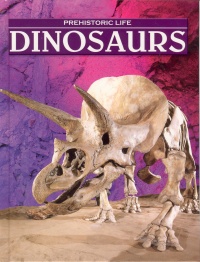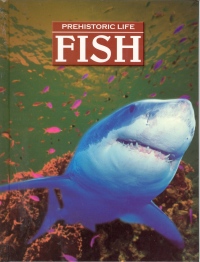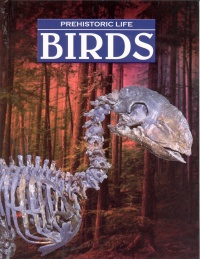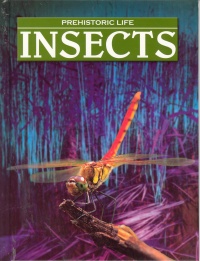| ________________
CM . . .
. Volume XI Number 21 . . . .June 24, 2005
excerpt:
The "Prehistoric Life" series has been endorsed by Canada's world-renowned Royal Tyrrell Museum of Paleontology, a national treasure in Drumheller, Alberta. All budding paleontologists will want to have this series in their school, public or home library. Although there is some overlap, each of the five books in the series focuses on a discrete aspect of prehistoric life forms. Consequently, whether readers are interested in botany, entomology, ichthyology or ornithology, they will be itching to get their hands on each of these beautifully created and extremely informative books. When we think of prehistoric life, there is a tendency to think only about dinosaurs. However important they were, dinosaurs lived, walked and ruled the Earth for only a relatively brief moment in the long history of life on the planet. These volumes correct that misapprehension. The students will see the developmental growth, change and increasing complexity of plant and animal life, which took place over the course of hundreds of millions of years on the ever-changing Earth. In the Precambrian Era (4.6 to 545 million years ago) simple life formed in the seas; in the Paleozoic Era (545 million to 250 million year ago) more complex life appeared on Earth in the form of plants, fish, insects and reptiles; in the Mesozoic Era (250 million to 65 million years), which is also called the "Age of Reptiles," dinosaurs and birds appeared; the era we live in now is the Cenozoic Era (65 million years ago to the present) when all types of mammals began to appear. All the volumes follow a similar format, and each contains a table of contents, index, research activities, websites, suggested readings and a glossary of terms. The most popular volume will, of course, be Dinosaurs, and it is as exceptional as the other volumes. There were land reptiles, flying reptiles and aquatic reptiles, but they, we learn, were not dinosaurs. Although reptiles, dinosaurs were special because of the way they stood and walked. The era of dinosaurs is divided into three periods: Triassic, Jurassic, and Cretaceous. Each contained very different kinds of dinosaurs that had, as the volume explains, adapted to the Earth's environment (the dinosaurs in the Jurassic Park movies were actually Cretaceous Age creatures). The Plants volume discuses how plants began to grow on the earth some 400 million years ago, which was 100 million years later than the first animal forms, and evolved into different varieties as environments changed. Some of these plants, mosses for example, still exist in a primitive form whereas others became extinct or evolved into the flowering plants that exist today. Students will learn about different plant groups and how they adapted to life in the earth's changing environments to increase their chance at survival. However, even though adaptable, plants are a fragile life form, and over the course of millions of years a large percentage died out in the great extinctions of the Permian and Cretaceous Periods. In Fish, students learn that the great era of fish, as the Earth's dominant life form, was 410 to 350 million years ago during the Devonian Period. Over the great expanse of time, they evolved into different species as they adapted to their environments, and some of the most primitive aquatic life forms still exist today. We learn about the greatest survivors in Insects. Insects are able to adapt to change quickly, and many of the species that lived hundreds of millions of years ago still survive today. The volumes make clear that there is still much to be learned about prehistoric life. Like all scientists, paleontologists know that they have to continue to explore, research, analyze, debate and, at times, debunk once popular theory. Highly Recommended. Ian Stewart, who teaches at David Livingstone School in Winnipeg, MB, had a great time trekking through Alberta's Dinosaur Provincial Park and touring the Royal Tyrell Museum in the summer of 2004.
To comment
on this title or this review, send mail to cm@umanitoba.ca.
Copyright © the Manitoba Library Association. Reproduction for personal
use is permitted only if this copyright notice is maintained. Any
other reproduction is prohibited without permission.
NEXT REVIEW |
TABLE OF CONTENTS FOR THIS ISSUE
- June 24, 2005.
AUTHORS |
TITLES |
MEDIA REVIEWS |
PROFILES |
BACK ISSUES |
SEARCH |
CMARCHIVE |
HOME |




